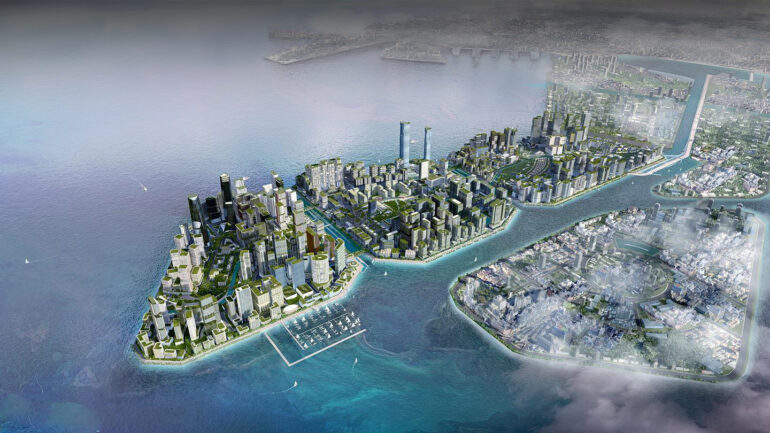Architect / Designer:
Studio:
Copyright:
Country:
Horizon Manila is a 419-hectare reclamation project that will be the first and largest reclamation project in the City of Manila in over a century. The project is meant to serve as a new hub for growth and development for one of the densest and largest mega cities of the 21st century.
How can we grow a city that would reflect the character and vitality of Manila? The Manileño concept presents a bottom-up community-centric organic growth model in contrast with the archetypal command-driven top-down master plan. It centers on creating shared experiences and building distinct community identities by establishing soft boundaries and edges.
This masterplan is composed of 3 islands bisected by a 4 km long canal park that recalls the identity of the Tagalog (River) people who settled along the mouth of the Pasig River. Manila is composed of 16 distinct districts and 897 barangays (neighborhoods) which reflect the hyperlocal settlement patterns of its people. The history and culture of the city is defined by the character and variety of these settlements. which together have created a vibrant mixture of people and places.
The masterplan focuses on people and local activities as the main determinant for diverse and organic growth. Shared experiences that tie the communities together are developed through activated public spaces with programs that strengthen the vitality of the streetscape. Placemaking features that stimulate local experiences define these spaces. They range from the ubiquitous streetball culture of Manila to lush tropical gardens, from water gardens to civic and religious plazas. Each place is a kernel of ground activity that evokes the culture and lifestyle of Manileños.
Identity is reinforced by creating soft boundaries and edges. The various communities will each develop their own distinct typologies with building envelopes that form an urban valley. These defined edges and boundaries, together with the urban geography will facilitate the growth of distinct communities that will each have its own character and language. Park towers, urban villages, riverfront communities, garden residences, or market districts, each district will be unique and made richer with their geographical and programmatic identity.
The goal is to grow 28 unique communities or barangays along the water’s edge. Each of the 28 communities will have its own development guidelines and will promote mixed-use development in each locality. Barrier-free developments with complete accessibility for all will be obligatory and urban infrastructure promoting social connectivity will be the defining framework for the city.
Horizon Manila is an alternative planning model for the megacities of tomorrow. Hyperlocal, intimate, accessible and socially connected. These are the features that will allow us to function in the increasingly massive and dense urban regions of our world.



